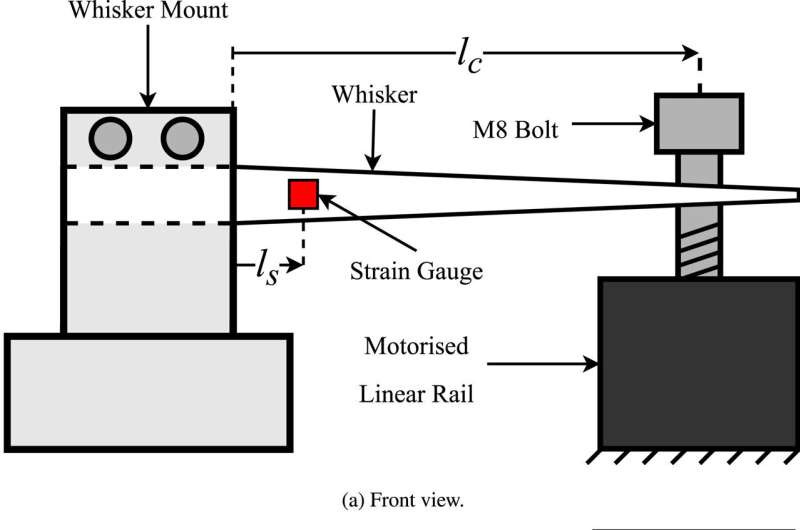
JULY 8, 2024 by Flinders University
Collected at: https://techxplore.com/news/2024-07-high-tech-whiskers-robots-ability.html
Taking inspiration from the animal kingdom, Flinders University researchers are developing affordable, flexible and highly responsive ‘whiskers’ to attach to robots. Their article, “Optimising electromechanical whisker design for contact localisation,” has been published in the journal Sensors and Actuators A: Physical.
While lasers and camera vision is used to instruct robot movement, the additional support of light-weight, cheap and flexible whiskers would give workplace and domestic robots additional tactile abilities in confined or cluttered spaces.
Like a rat’s whiskers, these sensors can be used to overcome a robot’s range-finder or camera blind spots which may not ‘see’ or register an object close by, says Flinders College of Science and Engineering Ph.D. candidate Simon Pegoli. Additionally, whiskers uncover properties of objects, such as moveability, not possible with camera or regular range-finder sensors.
Using mechanical beam theory, researchers are working on developing an optimal whisker shape so that robots could use these whisker attachments to “touch and interpret the weight of objects they run into, potentially moving the obstacles out of their path and also avoid damage,” says mechatronics graduate Mr. Pegoli.
“Every space is different, so giving robots effective tactile sensor systems to map their tasks and ‘visualize’ movement in their range will advance their abilities,” he says.
“We’ll continue to put these electro-mechanical ‘whisker’ prototypes to the test in problematic scenarios so the robot‘s operating system will eventually know how to respond to the information they gather.”
Associate Professor in Autonomous Systems, Dr. Russell Brinkworth, focuses on bringing robotics “out of the lab and into the real world,” and is helping researchers build artificial systems with the ability to adapt to different environments.
“We would like to see these whiskers function in a way similar to how our fingertips can assess the weight, shape and kind of object before us,” says Associate Professor Brinkworth, a co-author of the new article.
“These 3D printed sensor whiskers could be fitted at low cost and give robots many useful additional capacities.”
More information: Simon P. Pegoli et al, Optimising electromechanical whisker design for contact localisation, Sensors and Actuators A: Physical (2024). DOI: 10.1016/j.sna.2024.115591

Leave a Reply